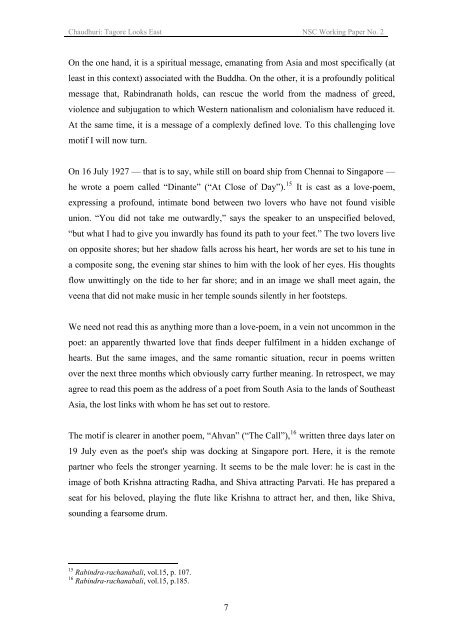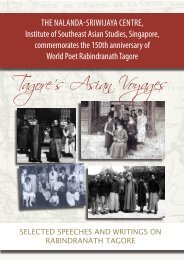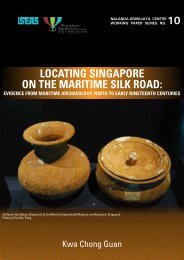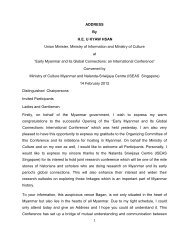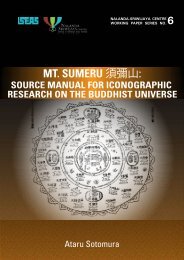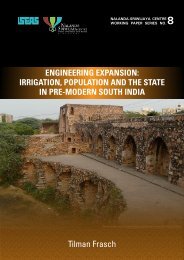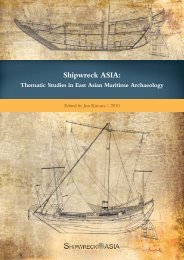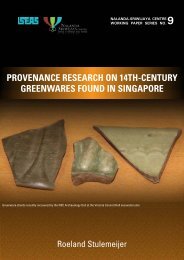2 TAGORE LOOKS EAST - Nalanda-Sriwijaya Centre - iseas
2 TAGORE LOOKS EAST - Nalanda-Sriwijaya Centre - iseas
2 TAGORE LOOKS EAST - Nalanda-Sriwijaya Centre - iseas
- No tags were found...
Create successful ePaper yourself
Turn your PDF publications into a flip-book with our unique Google optimized e-Paper software.
Chaudhuri: Tagore Looks East NSC Working Paper No. 2On the one hand, it is a spiritual message, emanating from Asia and most specifically (atleast in this context) associated with the Buddha. On the other, it is a profoundly politicalmessage that, Rabindranath holds, can rescue the world from the madness of greed,violence and subjugation to which Western nationalism and colonialism have reduced it.At the same time, it is a message of a complexly defined love. To this challenging lovemotif I will now turn.On 16 July 1927 — that is to say, while still on board ship from Chennai to Singapore —he wrote a poem called “Dinante” (“At Close of Day”). 15 It is cast as a love-poem,expressing a profound, intimate bond between two lovers who have not found visibleunion. “You did not take me outwardly,” says the speaker to an unspecified beloved,“but what I had to give you inwardly has found its path to your feet.” The two lovers liveon opposite shores; but her shadow falls across his heart, her words are set to his tune ina composite song, the evening star shines to him with the look of her eyes. His thoughtsflow unwittingly on the tide to her far shore; and in an image we shall meet again, theveena that did not make music in her temple sounds silently in her footsteps.We need not read this as anything more than a love-poem, in a vein not uncommon in thepoet: an apparently thwarted love that finds deeper fulfilment in a hidden exchange ofhearts. But the same images, and the same romantic situation, recur in poems writtenover the next three months which obviously carry further meaning. In retrospect, we mayagree to read this poem as the address of a poet from South Asia to the lands of SoutheastAsia, the lost links with whom he has set out to restore.The motif is clearer in another poem, “Ahvan” (“The Call”), 16 written three days later on19 July even as the poet's ship was docking at Singapore port. Here, it is the remotepartner who feels the stronger yearning. It seems to be the male lover: he is cast in theimage of both Krishna attracting Radha, and Shiva attracting Parvati. He has prepared aseat for his beloved, playing the flute like Krishna to attract her, and then, like Shiva,sounding a fearsome drum.15 Rabindra-rachanabali, vol.15, p. 107.16 Rabindra-rachanabali, vol.15, p.185.7


